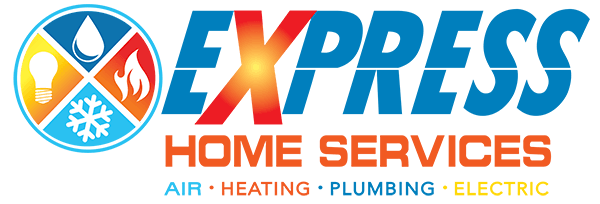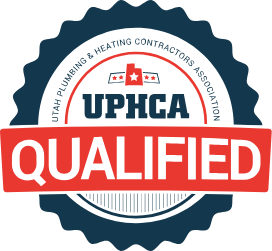With the hottest days of the year just around the corner, don’t find yourself stuck with a central air unit that won’t cool you down. Express Home Services’s is here to help keep you cool, all through the summer. Here are some tips to keep your central air unit running efficiently (and maybe even lower that energy bill)!
When was the last time you took a look, and we mean really took a look at the air vents throughout your house? Now is a great time to make they’re ready to go. A quick pass with the vacuum over each vent will clear the opening of dust and debris; things that might prevent airflow and cause that air conditioning bill to increase unnecessarily. If your vents require an air filter, making sure those have been switched will help keep things running smoothly–and if you’re not sure what air filters you need, Express Home Services’s is always here to help.
Leading to those vents are ducts and all the internal vent-work that help keep the air moving throughout your home. Taking a look at the seals around the ducts and making sure there aren’t any leaks will prevent the loss of cool air and push it where it needs to be. Most of this exposed ductwork probably exists in your attic and is best evaluated by a professional. But, if you find a leak or aren’t sure, let us know! We’re happy to take a look and make sure things are as they should be. Now is also a great time to make sure vents aren’t being blocked by any furniture, decor, rugs, etc. Little things like your kid’s toys, laundry hampers, and even your indoor plants can get in the way of airflow. Shake things up for the season with a quick rearrange, and make sure that cool air can get everywhere it needs to be!
While you’re rearranging, take note of where things that emit heat are placed, and move those away from your thermostat. Shift things like lamps, appliances, and other electronics to a different spot. Keeping an eye on the temperature your thermostat is set will also make a huge difference. After closing the blinds before you leave for work, kick the thermostat up a couple of degrees so that the air conditioning unit isn’t working too hard while you’re out. Research shows that increasing the temperature by seven to ten degrees for just eight hours a day can save you p to10% annually on your bill! You’re out of the house, so you won’t need it to be as cool! Increasing the temperature of the thermostat by even one degree, while you are home, can make a difference as well.
Installing a programmable thermostat can also be a huge help. Look into a system that can help you program the daily temperature and set times you might be out of the house (or even asleep!) so that you don’t need to worry about changing the temperature yourself. Getting your air conditioning unit and furnace on an automated schedule can help eliminate unnecessary spikes in temperature and help you control what’s happening inside, even if you’re not home.
If you live in an older home with older windows, investing in more efficient windows is also a great idea. Not only will this help with the efficiency of your air conditioning unit now, but it will also keep the heat from the furnace inside during these Utah winters.
Finally, make sure that the area around the outside air conditioning unit is clean. After heavy winter snow, debris such as branches and leaves can be built up around it, and spring clean-up might have left fresh clippings around it as well. Clearing things up outside will make sure the inside stays nice and cool. It might be obvious to point out, but making sure all seasonal coverings for the unit are removed is essential as well.
We know that sometimes, all the maintenance in the world isn’t going to keep that old central air system running. If you’re worried about the efficiency of the systems in your home need help with general maintenance and repair, don’t hesitate to give us a call at 801-294-2757. We’re happy to provide a free estimate for a new unit, or our experienced staff can help determine what services are required to get things up and running again.
Do It Yourself AC Efficiency Inspection
If you feel like your central air system isn’t working as efficiently as it should, you can do your own DIY AC Inspection, there are a few simple checks that you as a homeowner can do.
The first thing that you should do is turn the thermostat to cool and turn it down about 10 degrees. You should hear the blower fan on your furnace come on shortly after. Take a walk outside and look at your condenser. You should see the fan turning and hear the low hum of the compressor. Put your hand over the top of the air conditioner. The air should be warm. Visually inspect the fan motor to see if it has been replaced before. When a fan motor or capacitor has been replaced it is often a sign that something else is off with your air conditioner. The fan and compressor may be overworking. Fan motors that are not OEM (replacement parts from the manufacturer) may not spin at the correct RPM and can hold the fan blade in a different spot than what was originally designed. These deviations can cause hard-to-detect problems on your central air.
While outside, you will see two refrigerant lines. The large one is insulated, pull back the insulation on the fat pipe where the refrigerant line connects to the air conditioner. The pipe should feel cold like a soda can in the fridge.
After a few minutes, it would be normal to see condensation on this refrigerant line. Frost or ice is not normal, do not put your hand on the line at this time, this indicates a problem. Inspect the coil (the main outer cage like a radiator) and see if it is covered in debris including leaves, cottonwood, webs, dust, etc. Make sure to check out the area between the house and the unit as this space gets the most plugged up, without realizing it, debris could be the biggest concern. Turn the unit off by turning the thermostat to the off position, spray with a hose with a nozzle sprayer to clear off the buildup. Remember to turn the unit back on after cleaning it.
Inside, during your DIY AC Inspection, check the vents for proper airflow. Use a small string or a piece of paper to compare the airflow at different spots in your home. A temperature probe ($30) or thermometer is handy to check the coolness of the air. Laser temperature probes such as the one shown are great for this. The air should be 20 degrees colder than the air going in at the return air (the big grills).
Next, go to your furnace room, check your furnace and coil. Does it look like the coil and the furnace were installed at the same time? Inspect the craftsmanship of the metalwork and drain lines. Sloppy work is an indicator of other potential issues. Check for signs of water leakage on the floor and underneath the furnace. Water spilling out from underneath the coil is not normal and in any of these areas is not normal. Look at the big refrigerant line (on the coil – main outer cage- of the furnace at the top). Just like the outside unit, this pipe should feel cold and should not have ice or frost on it. Turn the switch off at the furnace and open the blower door (typically bottom door). With a flashlight look at the squirrel cage (blower fan). If you dare carefully run your finger along with one of the fan blades white glove test see how bad the buildup is, anything over 1/8 inch reduces airflow. They should be clean and free of debris. Our technicians should do the dirty work.
Proper Sizing
If you suspect that your central air is undersized for the AC unit already installed, there are some things that you, as a homeowner, can check. Observe your home from the outside. Look for high sun exposure on the South and West sides of your home. Large trees will help to shade your home from the heat of the sun. Contemplate planting shade trees one or more if possible. If you have more than one story above ground this will increase your heat load. Older homes may have poor insulation. Large windows will let in and trap heat. High vaulted ceilings connected to upstairs areas can be an issue.
Take a rough measurement of the square footage of all above-ground floors, don’t include your garage and basement. Measure the width and length of your home multiply those numbers. A rough guide is 1 ton for every 500 square feet. Central air systems that are undersized or oversized will not work properly. You can find the size of your air conditioner by looking at the model number, usually under the main panel compartment.
You should see one of the following numbers:
- 24 = 2 tons
- 30 = 2.5 tons
- 36 = 3 tons
- 42 = 3.5 tons
- 48 = 4 tons
- 60 = 5 tons
The ductwork is often an overlooked part of your HVAC system however it is one of the most crucial considerations. Central air systems are designed for 400 CFM (Cubic Feet per Minute) per ton. If you have a 3-ton system your ductwork should be able to support 1200 CFM. Most homes have 6” round metal ducts going to the vents. These are designed to provide 85 CFM per vent. Count your vents and don’t include the basement ones. You should have a sufficient number of vents for your central air system.
The return air is where the air circulates back into the central air system. These are usually the bigger grills. Measure and record the dimensions of all of them and compare them with the sizing chart below to get an idea of if you need more return air. Next, go into the furnace room and measure the return airdrop(s). This is the vertical ductwork that connects to the blower compartment of your furnace. Refer to the sizing chart to see if it’s sufficient. 5 ton systems should have a base that allows the air to enter the furnace from the bottom or have return air ducts on both sides entering the blower compartment.
If you suspect that your central air system has some issues or isn’t sized properly contact the professionals at Express Home Services. Our technicians have the newest tools of the trade and the know-how to use them. They are experts at diagnosing problems that may not be apparent to the naked eye






